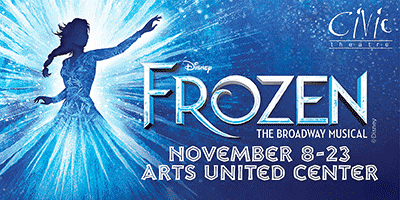Sis-Boom-Bah!

My wife and I enjoy watching old television shows on Antenna TV, especially The Tonight Show starring Johnny Carson who had a 30-year run as the affable and talented host. One of our favorite skits features Johnny as Carnac the Magnificent who is able to ascertain questions enclosed in “hermetically-sealed envelopes” handed him one by one by announcer Ed McMahon.
On the Feb. 6, 1987 episode, McMahon announced “the last envelope,” which drew heavy applause indicating the audience was glad the skit was about over.
McMahon then emphatically repeated several times the answer was, “Sis-Boom-Bah!”
After milking the suspense for at least a minute with the infamous envelope resting against his turban-covered head, Carnac finally asked, “Describe the sound made when a sheep explodes!”
It was obvious the show’s producers had kept the question from both McMahon and Carson because the audience laughter didn’t die down for a couple of minutes fueled by both McMahon’s and Carson’s own contagious laughs!
There’s another meaning of the echoic phrase Sis-Boom-Bah imitating the sound of a skyrocket flight (sis), the burst of the fireworks (boom) and the reaction of the crowd ((b)ah). And that’s where the humor in this piece ends because of the following statistics reported by the United States Consumer Product Safety Commission (CPSC) as Americans get ready to celebrate the Fourth of July.
Fireworks injuries are “skyrocketing.” CPSC found that 18 people died in non-occupational fireworks incidents in the U.S. in 2020, an increase of 12 deaths recorded in 2019. Between 2005 and 2020, there were 136 deaths from fireworks misuse. Along with the growing number of deaths, injuries from mishandling fireworks are escalating as well. The report states that 15,600 people were treated in emergency rooms due to non-occupational fireworks injuries in the U.S. in 2020 compared to around 10,000 in 2019.
Sixty-six percent of all fireworks injuries in 2020 occurred around the Fourth of July period, documented between June 21 and July 21. The main culprits were firecrackers and sparklers. During that time frame, hands/fingers accounted for the highest proportion of body part injuries at 30 percent, followed by the head, face or ear at 22 percent while eyes came third with 15 percent.
In terms of the type of injury, burns were the most frequent diagnosis by far at 44 percent, while contusions/lacerations and fractures/sprains were also relatively common.
Indiana state laws declare fireworks can be used from June 29 to July 3 and July 5 to July 9 from 5 p.m. to two hours after sunset. For holidays (including Memorial Day, Fourth of July, Labor Day and New Year’s Eve), the window of time is changed from 10 a.m. to midnight.
You can only use fireworks legally in three places: on your own property, on the property of another person who has given permission for you to use fireworks and at a special discharge location designated by local authorities for use of fireworks.
Although those are Indiana’s state laws, many Hoosier communities also may enforce local laws regarding use of fireworks. In fact, some localities across the State soon may be permitted to further restrict the days and hours when residents are allowed to shoot off fireworks.
I have to agree with State Rep. Donna Schaibley, R-Carmel, who says there are too many days with fireworks, particularly given the generally negative effects on pets and military veterans, as well as the potential for fireworks injuries. “Hoosiers are being inundated with explosions and booms from fireworks,” said Schaibley. Legislation from Schaibley would allow local governments to more tightly restrict when fireworks can be legally set off. Currently, there are 12 days during the year when local governments aren’t allowed to restrict fireworks at all during the evening – New Year’s Eve and 11 days around July 4. Schaibley’s bill, HB 1053, would shrink that down to just four days – New Year’s Eve and July 3, 4 and 5.
Fireworks are appropriate on the Fourth of July and New Year’s Eve, but not on Memorial Day when we mourn military personnel who have died while serving in the U.S. armed forces and on Labor Day honoring workers, recognizing their contributions to society.
Most important as far as I’m concerned, be considerate! If you have pets, keep them inside in an interior room to deaden the noise of the fireworks. Never light fireworks if pets are outside — not only could they be injured, but they could also try to run away from the noise. Fort Wayne’s Animal Care & Control reports that the day after July 4 is the highest in terms of lost pets. We have a Miniature Schnauzer who is terrified of fireworks and reacts year-round to any loud noise.
Consider your neighbors as well. Although you are allowed to light fireworks until midnight on the Fourth of July, if your neighbors have young children, nervous pets or are military veterans, consider ending your fireworks display early or hosting it at another’s property that’s farther away from anyone who might be disturbed by the noise.
I enjoy fireworks, especially those set off by professionals in large venues for an entire community to enjoy their beauty and tradition. But I don’t appreciate seeing neighborhoods turned into “war zones” with hot embers from large and loud pyrotechnics falling on roof tops, dry grasses and vehicles long beyond the legal limits.
Sis-Boom- and Bah Humbug!
- Do’s And Don’ts Of Veteran’s Day - November 7, 2025
- Columbus Sailed The Ocean Blue… But Now What? - October 10, 2025
- We’re Celebrating What In September? - August 29, 2025


